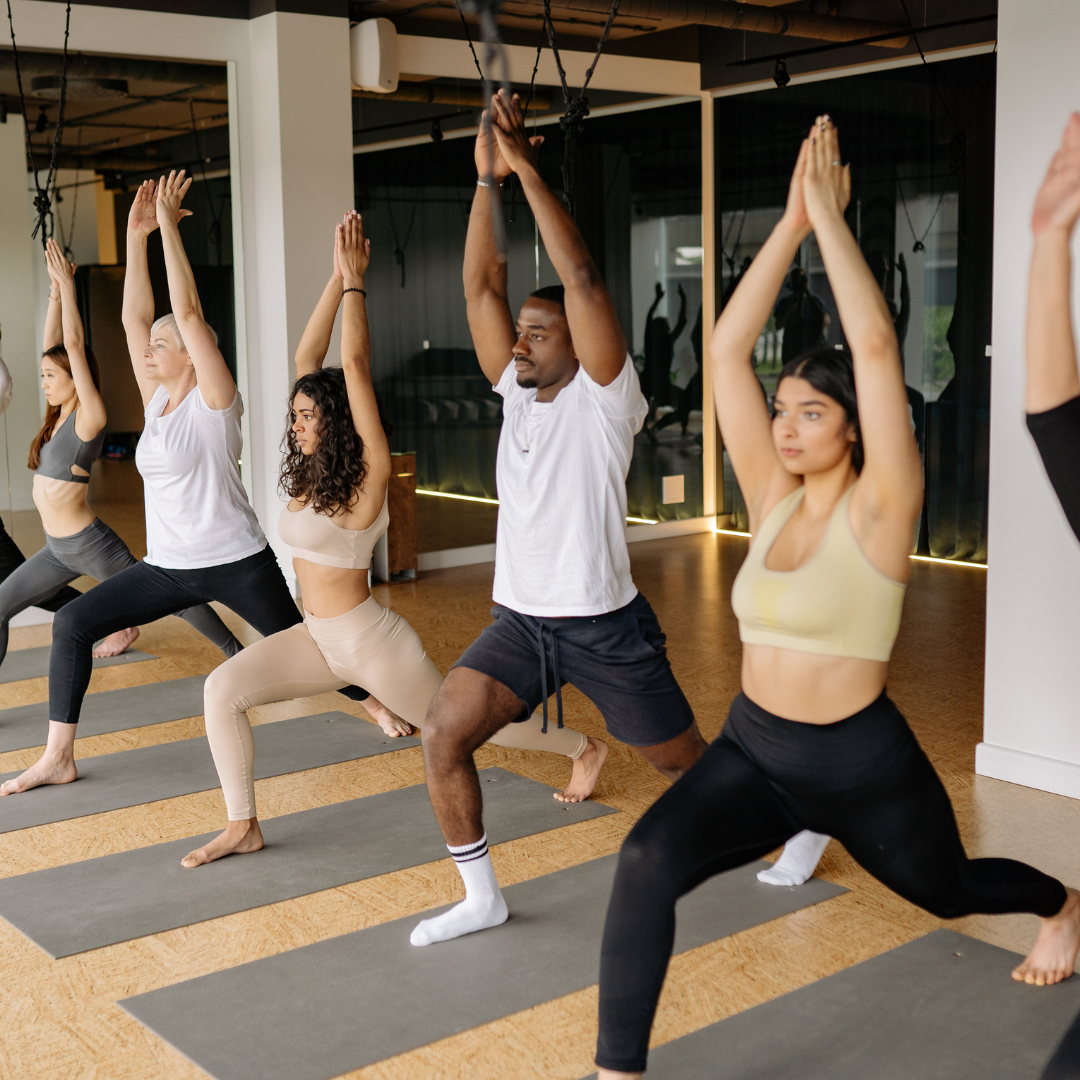Why Yoga Belongs in Your Recovery Routine
Yoga is often seen as a way to improve flexibility or balance, but its benefits go far beyond stretching. As both a therapeutic practice and a lifestyle habit, yoga supports physical recovery from workouts and injuries while also promoting mental recovery through stress relief and mindfulness.
Whether you’re an athlete, a weekend gym-goer, or simply dealing with daily stress, yoga offers tools to recharge the body and reset the mind.
Physical Benefits of Yoga for Recovery
1. Reduces Muscle Soreness and Tension
Yoga postures help release tight muscles, improve circulation, and flush out lactic acid after intense training. This speeds up recovery and reduces delayed onset muscle soreness (DOMS).
2. Improves Flexibility and Mobility
Consistent yoga practice increases range of motion, which lowers the risk of injury and helps you perform exercises with better form. Mobility-focused poses like Downward Dog or Low Lunge open tight hips, shoulders, and hamstrings.
3. Enhances Circulation and Healing
Yoga promotes blood flow, delivering oxygen and nutrients to muscles while carrying away waste products. Improved circulation accelerates tissue repair and overall recovery.
4. Supports Joint Health and Balance
Gentle yoga strengthens stabilizing muscles around the joints, reducing wear and tear while improving balance and coordination.
Mental Benefits of Yoga for Recovery
1. Lowers Stress and Anxiety
Yoga combines movement with breathwork, helping regulate the nervous system. Studies show it lowers cortisol (the stress hormone), making it a powerful tool for recovery from both workouts and daily life stress.
2. Improves Sleep Quality
Practicing yoga before bed encourages relaxation, helping the body shift into deeper sleep cycles. Better sleep means faster muscle recovery and improved mental clarity.
3. Boosts Mind-Body Awareness
Yoga sharpens the mind-muscle connection, teaching you to move with intention. This awareness translates into better form during strength training and reduced risk of injury.
4. Encourages Mindfulness and Focus
Yoga encourages living in the present moment, which reduces mental fatigue. A calmer, clearer mind helps you stay consistent with workouts and lifestyle goals.
Best Yoga Styles for Recovery
-
Restorative Yoga: Gentle poses supported by props; focuses on relaxation and healing.
-
Yin Yoga: Long-held stretches targeting connective tissue for deeper mobility and stress release.
-
Hatha Yoga: Slow-paced, foundational poses perfect for beginners.
-
Vinyasa (Gentle Flow): Breath-synced movement that warms the body while calming the mind.
How to Add Yoga Into Your Recovery Routine
-
Post-Workout: 10–15 minutes of yoga stretches to cool down and reduce soreness.
-
Active Recovery Days: A 30–45 minute restorative or yin yoga session instead of lifting weights or cardio.
-
Before Bed: Gentle stretches and breathing exercises to improve sleep.
-
Morning Reset: A short flow to increase blood circulation and prepare the mind for the day.
Final Thoughts
Yoga is not just about flexibility—it’s a complete recovery tool for both body and mind. By reducing soreness, improving mobility, lowering stress, and boosting mental clarity, yoga makes your recovery routine more effective and sustainable.
Whether you’re lifting weights, running marathons, or simply managing stress, adding yoga to your week can help you perform better, recover faster, and live healthier.
Share


